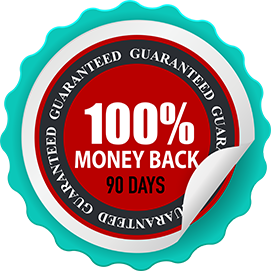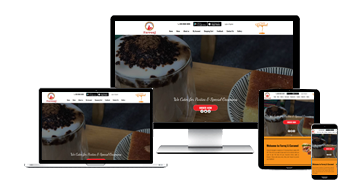Simple and actionable tips for success in the food service business
A unique selling proposition or USP is one of the fundamental components of the marketing strategy of a business. Marketing experts never tire of telling you why a USP is important for your business to thrive and how to craft a winning one. However, most of this expert wisdom is either too highfalutin or too general that it’s hardly of use to the business owner. In this backdrop, we look at how restaurants and takeaways can craft winner USP’s for themselves and stay ahead of competition.
USP, USP, USP…. what’s it anyway?
In simple terms a unique selling proposition or USP is a distinct advantage or benefit that your business offers that influences customers to purchase from you ahead of your competition.
in the context of marketing USP is a much bandied about term. So much so, marketing experts would have you believe that without a USP your business is as good as dead. We, however, do not subscribe to such an extreme view. Look around and you can see a good number of businesses that do well without seeming to have any USP. They do so either on the strength of the quality of their product or service or because they have a USP, which they haven’t identified and hence do not articulate.
However, a USP is a very important factor in marketing and its importance goes up with the intensity of competition. In other words, it is important for businesses that operate in a competitive market to “uniquify” themselves and articulate it. The food service businesses comprising restaurants and takeaways typically operate in an intensely competitive market and therefore they cannot disregard this factor.
Quality is a given, not a USP
Let’s first disabuse this widely held notion. Many businesses think that if they sell a quality product or offer a quality service, customers will keep coming to them. But what they fail to realize is, quality is not an advantage anymore, at least not in a competitive market. What stops your competitor(s) from offering similar or better quality? In fact, as markets mature, quality becomes a given, not something that is exclusive to a business. If you are a restaurant operating in a competitive market, you already know this. Today, with the proliferation of the Internet and social media, information on product quality is readily available to customers. It is therefore important to make sure that the food you serve meets the quality expectations of people, though it is not a USP anymore.
How do I identify my USP?
So you’re now convinced of the importance of having a USP for your restaurant. But how to craft one that is powerful and persuasive? It may take days or weeks for you to identify your USP, but be assured that the effort is well worth it.
The first step to creating your USP involves understanding your customers’ needs. What advantage, benefit, result or experience does your client want the most? Among these, identify what is it that they’re not getting from anyone else they deal with or even you.
A good way to do this is by discussing with your customers, current and potential. Find out what their desires, concerns, fears and frustrations are. The idea is to identify a need or set of needs in them that you can potentially satisfy through their product. You also look at your competition closely to find out if any of these needs are met by them. In this context, you’re not selling just a product or service but a result or benefit.
In the context of a foodservice business, here are some pointers to identifying customer needs.
| Desires:
Unique products Special taste Dining experience Freebies/Added value Discounts Personal attention Exclusivity Trust Privacy |
Frustrations
Time taken Ease of purchase Lack of information Lack of privacy Lack of or limited access Payment options Packaging |
| FearsQuality of ingredients
Processes used Hygiene/Cleanliness
|
ConcernsSafety
Price Hygiene/Cleanliness |
The above list of desires, frustrations, fears and concerns are by no means exhaustive but they will give you an idea of how to probe your customers. After identifying a need or set of needs, you ask yourself this question:
“In the light of what I know, what superior benefit or advantage or result am I as a business in a position to give my customer?”
You also look at your competition to find out if any of them have positioned themselves on this need. If not, you are all set. You craft a powerful USP that articulates how this benefit is offered by you. You don’t leave it at that. You relay it to your potential customers by incorporate it in everything that you say and do.
Some Samples
Here are a few examples that should give you even more clarity on how to craft your own USP. You will find that each of them offers a unique benefit or advantage which in turn is based on a clear knowledge of what the customer needs.
Service: “Delivered steaming hot to your door or it’s free!”
Product quality: “We use only certified organic products.”
Product exclusivity: “Only available with us!”
Distribution: “Available in every suburb.”
Trust: Leaders since 1980
Price: “We won’t be beaten on price”.
Risk mitigation: “100% moneyback guarantee If you’re not happy with our service.”
Remove frustration: “Buy in two simple steps.”
Summing up
The importance of USP in a competitive business such as food service cannot be overemphasized. A powerful USP can go a long way in giving a restaurant or takeaway considerable competitive advantage. The above tips should be of help to them to craft a winner USP and reap the rewards.









